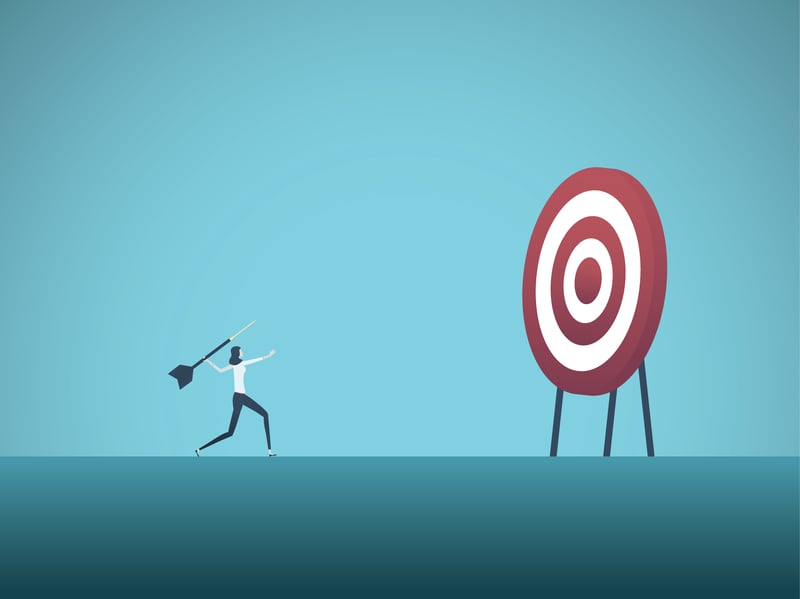
A business can implement different types of growth strategies to expand its capabilities. Common expansion strategies include entering new markets, releasing new products or services, acquiring other companies, increasing advertising, or expanding into other regions. Each of these techniques can play a significant role in assisting businesses to achieve fast and profitable growth that is both sustainable and efficient.
These strategies are essential for businesses since they serve as a road map for achieving growth objectives. Without a growth strategy, companies may struggle to discover new clients or markets to penetrate and miss opportunities to provide new products and services. If your goal is to drive your growth in marketing strategy in 2023, here's how you can make it happen.
How Can You Dominate Your Growth Marketing Strategy In 2023?
Plans and strategies frequently require revision and improvement. You cannot improve your strategy if you are unwilling to test new ideas and follow the results. If you want to dominate your growth marketing plan and efforts in 2023, consider the following advice.
Determine Where Conversions Are Falling Short
Determining where conversions are falling short is essential in identifying areas for improvement in your marketing strategy. Understand the buyer's journey and the different stages of the pirate funnel (awareness, acquisition, activation, retention, revenue, and referral) and determine where conversions are not happening or not happening enough. There are some ways to go about this:
- Focus on conversions at all funnel stages: Growth marketing strategies aim to gain conversions at all funnel stages, not just at the point of becoming a customer.
- Move leads and customers from awareness to referral: Growth marketers aim to build relationships, encourage loyalty, and motivate customers to refer others by moving as many leads and customers as possible from awareness to referral.
- Analyse the reasons for lack of conversion: Examining where leads and customers are not converting can help identify areas for improvement.
- Test incentives to reduce failures: Test various rewards and incentives to determine which discourages turnovers and increases client retention.
Build Brand Credibility
Building brand credibility is crucial for organisations because it facilitates the formation of customer trust and loyalty. When people trust a brand, they are more likely to purchase from and promote that brand. In addition, a trustworthy brand is more likely to attract new customers and be regarded as an industry leader. A brand's credibility can also result in more sales and revenue for a business. Here are a few ways to build brand credibility:
- Use customer testimonials: Share stories from satisfied customers to showcase the value and features of your products or services.
- Earn industry awards: Seek out industry awards to demonstrate that experts in your field recognise the value of your brand.
- Develop thought leadership content: Share your expertise and insights through blog posts, whitepapers, webinars, and other thought leadership content.
- Establish partnerships and collaborations: Partner with other reputable brands or organisations to showcase your brand is respected and well-connected.
- Be transparent: Share information about your business, team, and values to build trust with potential customers.
- Develop a consistent brand identity: Use consistent messaging, visuals, and tone across all marketing channels to create a cohesive brand image and build trust with potential customers.
Make Data-Driven Decisions
With today's technology, there are numerous ways to collect data. According to the McKinsey Global Institute, businesses today store more than 200 terabytes of data. If you monitor your essential metrics, data-driven decision-making makes it simple to determine where and how a process can be improved. Here's how you can implement it with your marketing team.
- Set key performance indicators (KPIs): Establish metrics and goals for each funnel stage to determine whether strategies work or need refinement.
- Track numeric and qualitative KPIs: KPIs can be numeric (such as conversion rates) and qualitative (such as consumer sentiment).
- Analyse referral data: Understand why customer referrals may be lower than desired and take action to improve.
- Analyse net promoter score (NPS) surveys: Use NPS surveys to understand consumer sentiment and identify areas for improvement.
- Identify passive consumers: Understand why some customers are inactive and take action to turn them into loyal brand advocates.
Invest in Omnichannel Experiences
According to the Harvard Business Review, around 73% of buyers prefer shopping via multiple channels. To provide a seamless experience to your customers, invest in an omnichannel approach that allows you to target the right customer at the right time and ensures consistency in messaging and experiences across all marketing channels.
- Meet consumer expectations: Today's consumers expect personalised and consistent experiences across all channels, so make sure to invest in technology and processes that enable you to meet these expectations.
- Map out consumer interactions: Understand where and how different segments interact with your brand to identify opportunities to refine and expand your omnichannel experiences.
- Address pain points in the customer journey: Identify areas where customers are struggling, such as a confusing online store or a lengthy checkout process and take actions to address them.
- Align with consumer's expectations: Ensure that the experiences you provide align with the consumer's expectations, such as making the checkout process and shipping practices match their expectations can improve conversions and meet bottom-of-the-funnel needs.
Best Channels for Growth Marketing in 2023
As we head into 2023, the marketing landscape will shift and evolve. Here are several channels that are expected to be particularly effective for growth marketing for businesses in the coming year:
Social media will continue to be a powerful marketing tool
Social media is a highly effective marketing tool that can be utilised to expand brand awareness and marketing reach. It facilitates a more immediate and approachable connection with your audience.
In addition, it allows the spread of your brand's vision and message, ultimately building partnerships. Social media will continue to be an effective marketing tool in 2023.
Companies will start using more video content
More businesses will begin to use video to tell stories in 2023. Video is an excellent method for establishing an emotional connection with customers. Using video, businesses may demonstrate who they are and what they stand for.
Here are examples of how you can use video in your marketing efforts:
1. Promotional videos: These are brief, captivating videos that highlight your product or service and explain its features and benefits.
2. Educational videos: These videos provide value to your audience by instructing them on how to utilise your product or teaching them something new.
3. Testimonial videos: These videos show actual customers discussing their experiences with your product or service.
Email marketing will make a comeback
Email marketing remains crucial to business marketing strategies, with 89% of marketers stating that it is their primary tactic for lead generation. Email is a great tool to stay in contact with customers and keep them informed about what's happening with your company. Developing an effective email marketing strategy in 2023 requires that you keep up to date with email marketing trends for the coming year.
SEO (Search Engine Optimisation) will become more important
SEO has always been important, but in 2023, its significance will increase even more. It will continue and exist for a long time because people use search engines to find products, services, and information as the world becomes increasingly digital.
In 2023, SEO involves more than just keywords and content. Technical SEO is the cornerstone of website optimisation. Therefore optimising multimedia content in addition to written content is crucial. According to HubSpot statistics, the vast majority (88%) of marketers with established SEO strategies expect to increase or maintain their existing level of investment in this essential marketing tactic.
Influencer marketing will continue to grow
According to the Forbes Influencer Marketing Predictions For 2023, influencer marketing could become one of the most effective marketing strategies in 2023. Creator marketing can drive brand growth throughout the entire purchase funnel, and numerous businesses have utilised online and offline influencer methods over the past few years. Understanding social trends and modifying influencer marketing techniques will be essential for establishing successful campaigns and providing exceptional business outcomes in 2023.
Dominating Growth Marketing with gigCMO Playbook
A growth marketing plan requires consistent work over time. The fundamental idea behind these strategies is to run tests and gain insight from the data. In order to increase revenue and client retention, growth marketers must always assess how effective their strategies are.
The way we prepare events for market success is similar to how the NFL coaches or rugby coaches may approach a game: with a game plan and a set of plays for various possibilities. If you want to maximise the use of your marketing budget, you need to develop a comprehensive plan that communicates your brand's message and helps everyone in your organisation grasp the bigger picture.
For each marketing goal, the gigCMO Playbook defines the optimal messages, channels of communication, best practices, and optimisation strategies to achieve the highest possible return on investment. Playbooks help businesses in making the most of the numerous modern marketing communications options available by guiding businesses in the most productive directions with regard to:
- Communication channels, best practices, and optimisation strategies need to be implemented to achieve the greatest possible return on investment.
- Understanding how people or organisations embrace, interact with, and respond to various types of digital communication.
- Planning, allocating, and defining communications workflows for campaigns and implementation constitutes "communications orchestration."
- Evaluating a channel's success using key performance indicators (KPIs) and how to define goals.
- Using multiple channels simultaneously to increase the effectiveness of a campaign.
- Marketing technologies and resources to assist in strategy development, performance evaluation, and tactical implementation of the many marketing methods at your disposal.
Contact gigCMO to build a profitable business strategy in 2023.
Watch the Video




